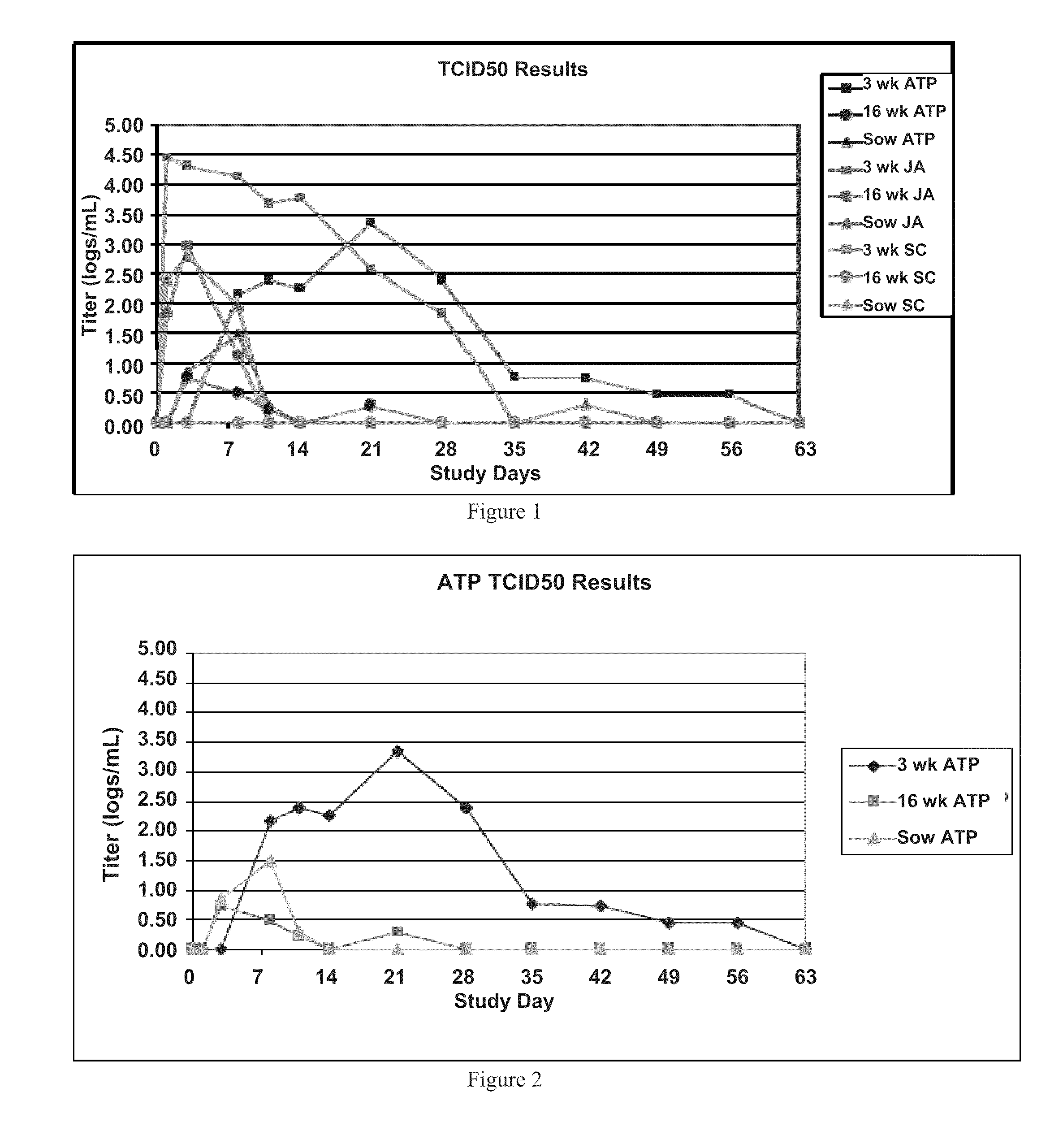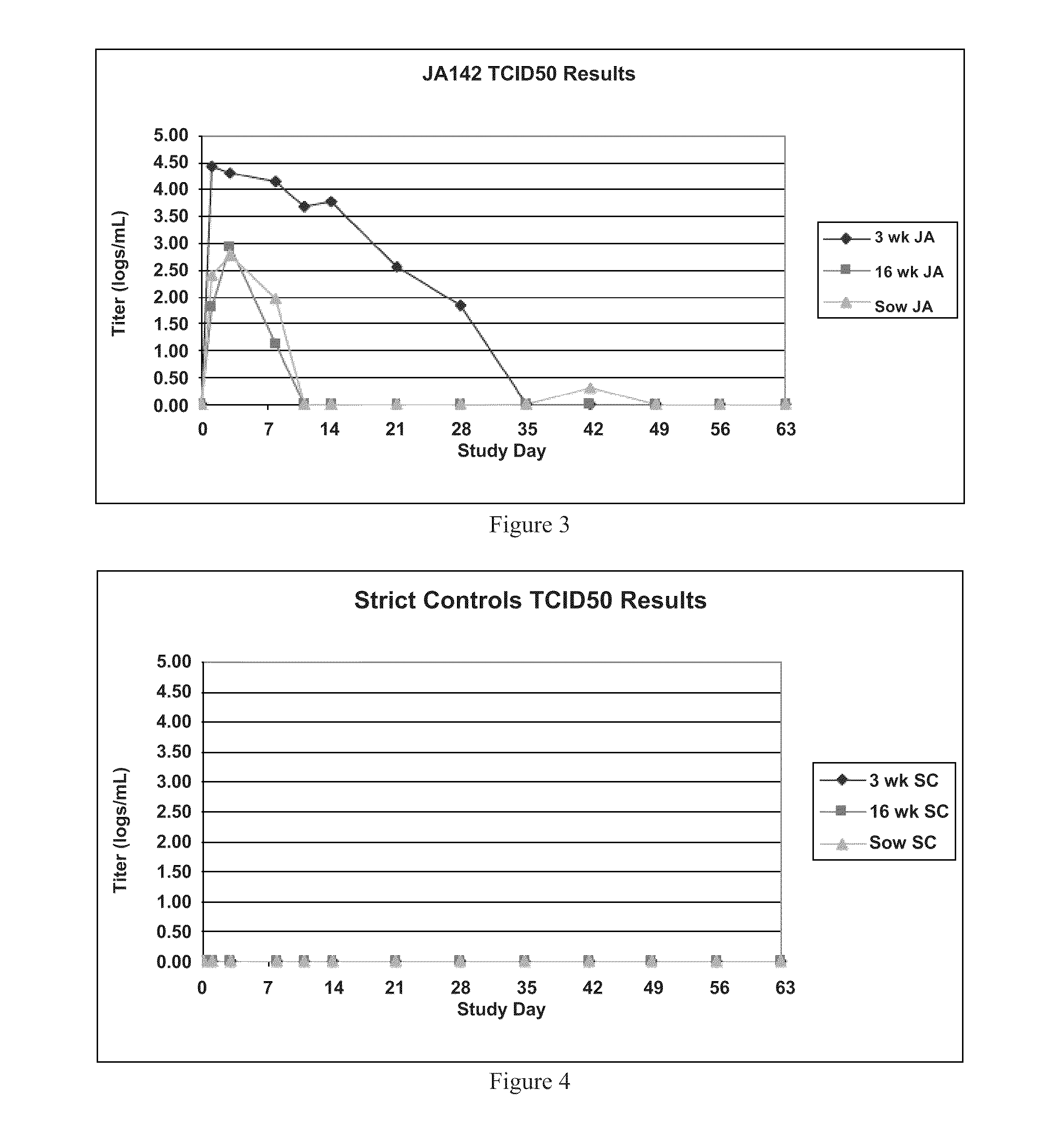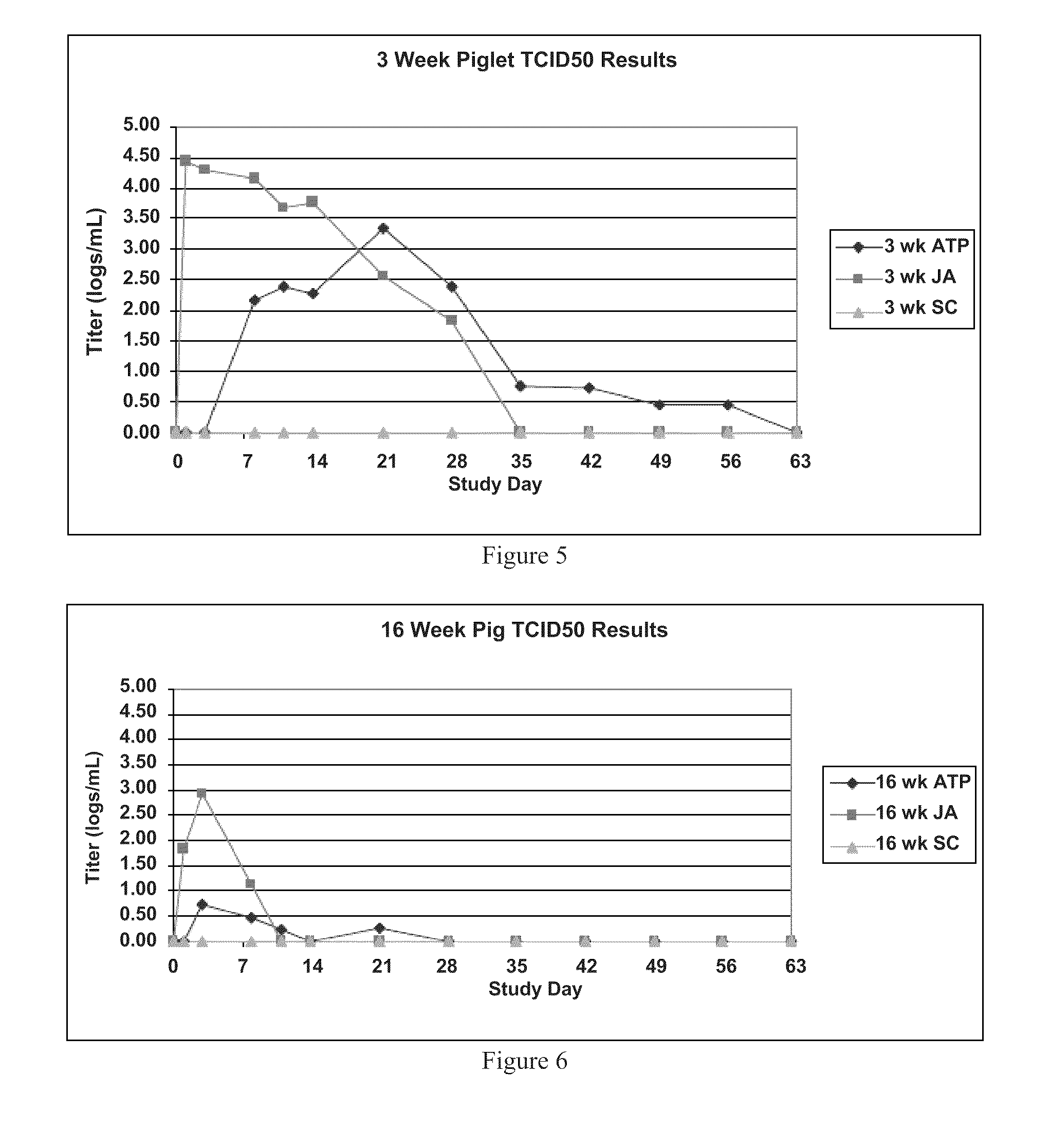Materials and Methods for Control of Porcine Reproductive and Respiratory Syndrome
a technology for which is applied in the field of methods for controlling respiratory syndrome and porcine reproductive and respiratory syndrome, can solve the problems of increased mortality, reduced feed conversion and average daily weight gain, and severe reproduction loss, and achieves high titers and high titers. , the effect of prolonging the time of infecting
- Summary
- Abstract
- Description
- Claims
- Application Information
AI Technical Summary
Benefits of technology
Problems solved by technology
Method used
Image
Examples
example 1
Log TCID50 / mL Assays
[0103]Two PRRS isolates with known different virulence levels were used to inoculate animals of varying age, and the immune responses of these animals were evaluated for differences. The viremia data was used to correlate B cells and immune responses. Finally, to check for immune interference, all pigs were vaccinated with a killed M. hyo vaccine as well.
[0104]The TCID50 data shows several apparent trends with the effects of age and virulence on the level of viremia in pigs (summarized in FIG. 1). There is a distinct delay in viremia in pigs of all ages receiving the Ingelvac® PRRS ATP when compared to those pigs receiving the virulent JA142 challenge strain. Also, the young pigs achieved higher levels of viremia and retained those higher levels longer than both of the older groups of pigs.
[0105]FIGS. 2-7 better illustrate these observations. Statistics were performed by completing a group average non-parametric ANOVA. The data achieving significant values (Krusk...
example 2
Quantitative PCR (Copies / mL) Assays
[0113]The quantitative PCR (qPCR) data also shows a couple trends in relation to age and virulence (summarized in FIG. 8). The JA142 group achieves a higher copy number of virions per milliliter (mL) of serum when compared to the Ingelvac® ATP and control groups. Also, the 3 week piglets in each treatment have higher virus copies per mL than the sows. Likewise, the sows have a greater viral load than the 16 week pigs.
[0114]These observations are illustrated in FIGS. 9-15. Statistics were performed by completing a group average non-parametric ANOVA. The data achieving significant values (Kruskal-Wallis p<0.05) were re-evaluated pairwise using the Wilcoxon Two-Sample Test (p<0.05.)
[0115]All age groups of ATP treated pigs increase in copy numbers at about the same time (see FIG. 9). The 3 week ATP piglets climb to the highest viral load and maintain 6 logs of viral copies / mL. The two older groups reach a level of about 5 logs and steadily decrease ove...
example 3
Serology—IDEXX PRRS ELISA (S / P Ratios) Assays
[0121]The IDEXX PRRS ELISA data (see FIG. 15) illustrates a couple trends in relation to age and virulence. The JA142-challenged group started to seroconvert about 4 days prior to the Ingelvac® ATP challenged group. Also, the sows in each treatment generally seroconverted quicker and with higher S / P ratios than the 16 week pigs, which generally seroconverted quicker and with higher S / P ratios than the 3 week piglets in their respective challenge groups.
[0122]FIGS. 16-21 illustrate these observations. Statistics were performed by completing a group average non-parametric ANOVA. The data achieving significant values (Kruskal-Wallis p<0.05) were re-evaluated pairwise using the Wilcoxon Two-Sample Test (p<0.05.)
[0123]When comparing all of the animals challenged with ATP by age group, the general trend for seroconversion was consistent. S / P ratios began to increase on the same day, peaked on the same day, and followed similar patterns after pe...
PUM
| Property | Measurement | Unit |
|---|---|---|
| Time | aaaaa | aaaaa |
| Time | aaaaa | aaaaa |
| Fraction | aaaaa | aaaaa |
Abstract
Description
Claims
Application Information
 Login to View More
Login to View More - R&D
- Intellectual Property
- Life Sciences
- Materials
- Tech Scout
- Unparalleled Data Quality
- Higher Quality Content
- 60% Fewer Hallucinations
Browse by: Latest US Patents, China's latest patents, Technical Efficacy Thesaurus, Application Domain, Technology Topic, Popular Technical Reports.
© 2025 PatSnap. All rights reserved.Legal|Privacy policy|Modern Slavery Act Transparency Statement|Sitemap|About US| Contact US: help@patsnap.com



